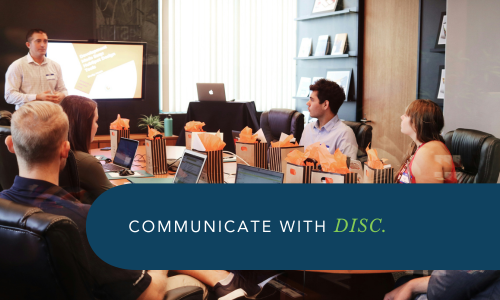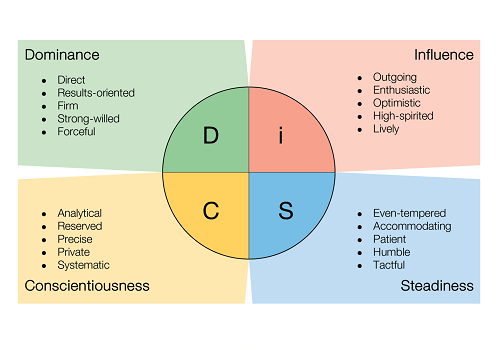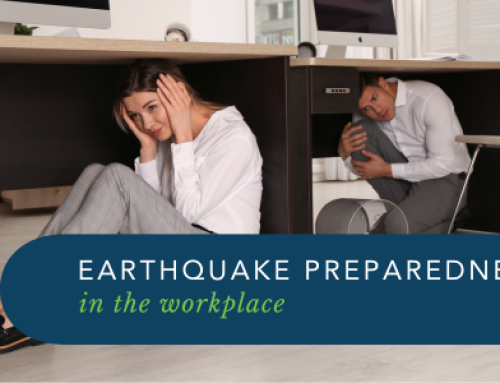There is no denying the power of communication in an emergency. When it comes to managing workplace emergencies, it’s invaluable to know the communication styles, strengths and personalities of your employees so you can best prepare and plan for emergency situations. One tool that our team at WEM has adopted in our work, and often refers back to is the ‘DISC’ method. In this article, we are breaking down the DISC method in an effort to educate and encourage our clients and readers to consider DISC when formulating their emergency management plan, including how they choose individuals for the roles in an Emergency Control Organisation (ECO).
What is ‘DISC’?
DISC measures dimensions of your personality. It does not measure intelligence, mental health, aptitude, or values.
DISC profiles describe human behaviour in various situations such as how you respond to challenges, how you influence others, your preferred pace of learning and how you respond to rules and procedures.
Some characteristics of DISC are as follows:
D = Dominate Director:
Pros
A person that is always striving to succeed. This person knows what they what.
‘Dominate directors’ are constantly decision making based on the outcome.
These people can be direct and firm with their approach. ‘Dominate directors’ like to be situated front and centre with regards to workplace decisions and workplace goal setting.
Cons
‘Dominate directors’ can become frustrated with others easily. This person will become sarcastic when they are not achieving their goals. They will become impatient with others that take a long time in their decision-making process.
I = Interactive Innovators
Pros
‘Interactive innovators’ are very loyal people. They will be the life of any party.
‘Interactive innovators’ are bright and bubbly personalities. They are good, fun people to be around.
Cons
‘Interactive Innovators’ are very loud in a group setting. They are extremely impulsive decision makers. They will cancel appointments with minimal notice and fuss.
S = Steady Relators
Pros
‘Steady relators’ are quiet, thoughtful people. They are also very loyal towards others. They will appear to be in continuous thought. ‘Steady relators’ are extremely deep thinkers.
Cons
Steady relators hate workplace confrontation. ‘Steady relators’ do not like being the centre of attention. These people are always situated at the back of the room. They will not be forth coming with answers to questions. It is not advisable to single out a ‘steady relator’ in a group. They are very intelligent people that like to hear all the facts first before coming up with a response. Whenever a ‘steady relator’ does have something to say in a group, it is advisable that everyone should sit back and listen as they are about to educate the whole room.
C = Concise Perfectionist
Pros
‘Concise perfectionists’ love both facts and figures. They are very analytical people. ‘Concise perfectionists’ traditionally take up roles of employment such as scientists, professors and lab technicians to name a few. They love to do research-based tasks so give them take-home tasks to do.
Cons
‘Concise perfectionists’ can be very suspicious of all. If you are presenting to a group of ‘concise perfectionists’ know your facts and figures. Do not guess with your responses. They will research what you have said. If anything presented differs from the statistics they will know and become be even more suspicious of you.
In Conclusion…
Understanding the DISC model is crucial in emergency management within the workplace because it helps tailor roles and responsibilities to individuals’ inherent strengths, leading to more efficient and effective responses.
Dominance-oriented individuals are naturally inclined to take control and make quick, assertive decisions. Their leadership is vital during the initial response phase, where clear, decisive action can mitigate the impact of the emergency.
Influence-focused team members excel in communication and motivation. In an emergency, they are the ones who can keep everyone informed and calm, ensuring that accurate information is disseminated promptly and that team morale remains high.
Steadiness personality types provide stability and support, crucial in maintaining order amidst chaos. They are dependable and can offer a reassuring presence, helping to manage stress and ensuring that the team remains focused and cohesive.
Conscientiousness-driven individuals bring a meticulous and detail-oriented approach. They are essential for ensuring that all emergency protocols are followed precisely and that nothing is overlooked. Their thoroughness can prevent errors and ensure that every step of the emergency plan is executed correctly.
By understanding and leveraging the DISC profiles, managers can assign roles that play to each individual’s strengths, creating a well-coordinated team capable of handling emergencies more effectively. This understanding not only enhances the immediate response but also improves the overall preparedness and resilience of the workplace. Workplace Emergency Management has adopted this model internally, utilising it when delivering training to the workplaces we support, and in our own emergency management practices.
For more information, get in touch today.
GET IN TOUCH
Are you ready for peace of mind that your workforce is as safe and prepared as possible?
With a dedicated team of staff ready to help you meet compliance requirements and improve the overall safety of your workplace, all you need to do is get in touch.
Request your free audit today!




